Potřebujeme váš souhlas k využití jednotlivých dat, aby se vám mimo jiné mohly ukazovat informace týkající se vašich zájmů. Souhlas udělíte kliknutím na tlačítko „OK“.
ASTM D4742-08e1
Standard Test Method for Oxidation Stability of Gasoline Automotive Engine Oils by Thin-Film Oxygen Uptake (TFOUT) (Includes all amendments And changes 6/20/2016).
Automaticky přeložený název:
Standardní zkušební metoda pro oxidační stability benzínu Automobilové oleje motor Thin-Film spotřeba kyslíku (TFOUT)
NORMA vydána dne 15.10.2008
Informace o normě:
Označení normy: ASTM D4742-08e1
Poznámka: NEPLATNÁ
Datum vydání normy: 15.10.2008
Kód zboží: NS-28397
Počet stran: 11
Přibližná hmotnost: 33 g (0.07 liber)
Země: Americká technická norma
Kategorie: Technické normy ASTM
Kategorie - podobné normy:
Anotace textu normy ASTM D4742-08e1 :
Keywords:
oxidation stability, oxygen uptake, sequence IIID engine simulation, TFOUT, Automotive engine fuels/oils, Bomb methods, Fuel oils, Lubricants (fluid), Lubricating oils, Oxidative stability, Oxygen bomb method, Oxygen uptake, Simulation testing, Stability--petroleum products, Thin film oven test (TFOT), ICS Number Code 75.080 (Petroleum products in general), 75.100 (Lubricants, industrial oils and related products)
Doplňující informace
| Significance and Use | ||||||||||||||
|
This test method is used to evaluate oxidation stability of lubricating base oils with additives in the presence of chemistries similar to those found in gasoline engine service. Test results on some ASTM reference oils have been found to correlate with sequence IIID engine test results in hours for a 375 % viscosity increase. The test does not constitute a substitute for engine testing, which measures wear, oxidation stability, volatility, and deposit control characteristics of lubricants. Properly interpreted, the test may provide input on the oxidation stability of lubricants under simulated engine chemistry. This test method is intended to be used as a bench screening test and quality control tool for lubricating base oil manufacturing, especially for re-refined lubricating base oils. This test method is useful for quality control of oxidation stability of re-refined oils from batch to batch. This test method is useful for screening formulated oils prior to engine tests. Within similar additive chemistry and base oil types, the ranking of oils in this test appears to be predictive of ranking in engine tests. When oils having completely different additive chemistry or base oil type are compared, oxidation stability results may not reflect the actual engine test result. Other oxidation stability test methods have demonstrated that soluble metal catalyst supplies are very inconsistent and they have significant effects on the test results. Thus, for test comparisons, the same source and same batch of metal naphthenates shall be used. Note 2—It is also recommended as a good research practice not to use different batches of the fuel component in test comparisons. |
||||||||||||||
| 1. Scope | ||||||||||||||
|
1.1 This test method evaluates the oxidation stability of engine oils for gasoline automotive engines. This test, run at 160°C, utilizes a high pressure reactor pressurized with oxygen along with a metal catalyst package, a fuel catalyst, and water in a partial simulation of the conditions to which an oil may be subjected in a gasoline combustion engine. This test method can be used for engine oils with viscosity in the range from 4 mm2/s (cSt) to 21 mm2/s (cSt) at 100°C, including re-refined oils. 1.2 This test method is not a substitute for the engine testing of an engine oil in established engine tests, such as Sequence IIID. 1.3 The values stated in SI units are to be regarded as the standard. The values given in parentheses are provided for information purposes only. 1.4 This standard does not purport to address all of the safety concerns, if any, associated with its use. It is the responsibility of the user of this standard to establish appropriate safety and health practices and determine the applicability of regulatory limitations prior to use. For specific warning statements, see Sections 7 and 8. |
||||||||||||||
| 2. Referenced Documents | ||||||||||||||
|
Podobné normy:
Historická
1.5.2013
Historická
1.10.2009
Historická
1.5.2014
Historická
1.1.2010
Historická
15.2.2010
Historická
1.5.2014
Doporučujeme:
EviZak - všechny zákony včetně jejich evidence na jednom místě
Poskytování aktuálních informací o legislativních předpisech vyhlášených ve Sbírce zákonů od roku 1945.
Aktualizace 2x v měsíci !
Chcete vědět více informací? Podívejte se na tuto stránku.


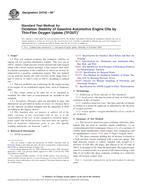
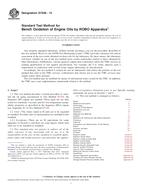 ASTM D7528-13
ASTM D7528-13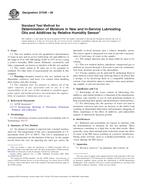 ASTM D7546-09
ASTM D7546-09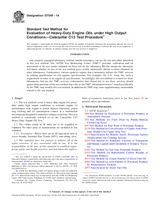 ASTM D7549-14
ASTM D7549-14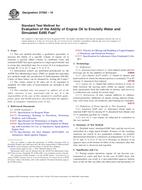 ASTM D7563-10
ASTM D7563-10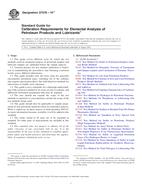 ASTM D7578-10e1
ASTM D7578-10e1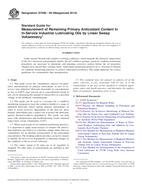 ASTM D7590-09(2014)..
ASTM D7590-09(2014)..
 Cookies
Cookies
